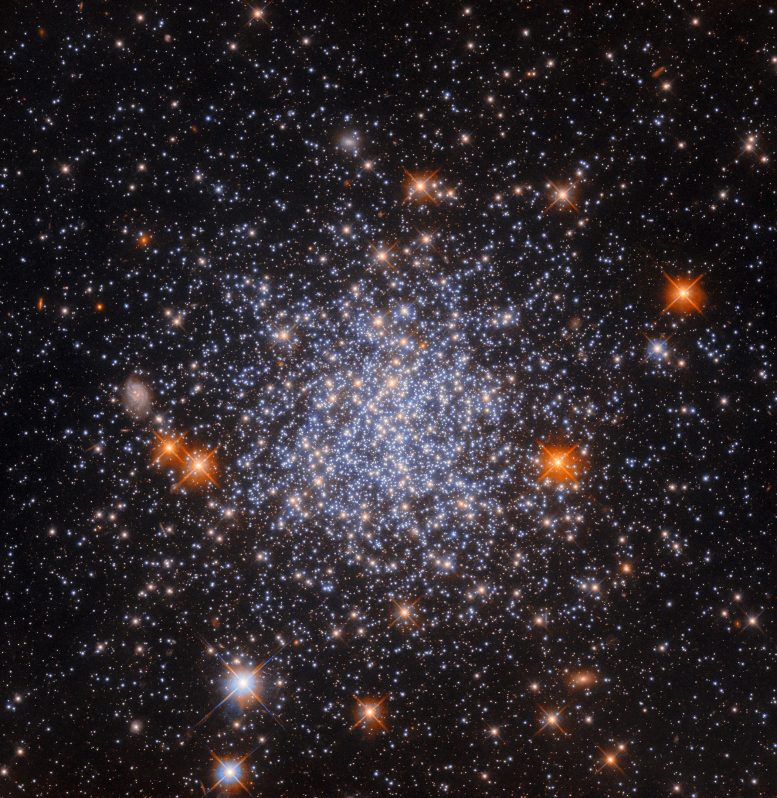
This image of NGC 1651, a globular cluster in the Large Magellanic Cloud, highlights how celestial objects appear in Hubble's images at different scales due to its fixed view and the object's distance from Earth Credit: ESA/Hubble & NASA, L. Girardi, F. Niederhofer
Hubble captures a variety of cosmic scales, from the close globular cluster NGC 1651 to distant galaxies, using its fixed observation objective and mosaicking when needed.
This is Hubble Space Telescope The image shows a globular cluster called NGC 1651. Like another recent Picture of the Week object, it's located about 162,000 light-years away in a massive and bright spot. milky wayof satellite galaxies, the Large Magellanic Cloud (LMC).
A striking feature of this image is that globular clusters, ranging from 10 to 300 light-years in diameter (NGC 1651 is approximately 120 light-years in diameter), almost fill the entire image. In contrast, there are plenty of Hubble images of the week that contain entire galaxies—perhaps tens or even hundreds of them. Millions Light years in diameter – it more or less fills the entire image.
Binocular field of view explained
A common misconception is that Hubble and other large telescopes are able to observe celestial objects of vastly different sizes by simply magnifying them, like a special camera on Earth. However, while smaller telescopes have the option to zoom in and out to a certain extent, larger telescopes do not. Each telescope instrument has a fixed 'field of view' (the amount of sky that can be observed in one observation).
For example, the ultraviolet/visible light channel of Hubble's Wide Field Camera 3 (WFC3), the channel and instrument used to collect the data used in this image, has a field of view about one-twelfth the diameter of the Moon. Seen from Earth. Whenever WFC3 makes an observation, it is the area of the sky that can be observed.
Capturing the cosmic scale
The reason Hubble was able to observe objects of such different sizes was twofold. First, the distance to an object determines how large it appears from Earth, so entire galaxies that are relatively far away can take up the same amount of space in the sky as a globular cluster like NGC 1651, which is relatively close.
In fact, there is a distant spiral galaxy lurking in this image, directly to the left of the cluster – undoubtedly larger than this star cluster, but here it appears small enough to blend in with the foreground stars! Second, multiple images spanning different regions of the sky can be stitched together to create single images of objects too large for Hubble's view.
This is a very complex task and is not usually done for images of the week, but it has been done on some of Hubble's. Small pictures.

„Oddany rozwiązywacz problemów. Przyjazny hipsterom praktykant bekonu. Miłośnik kawy. Nieuleczalny introwertyk. Student.
